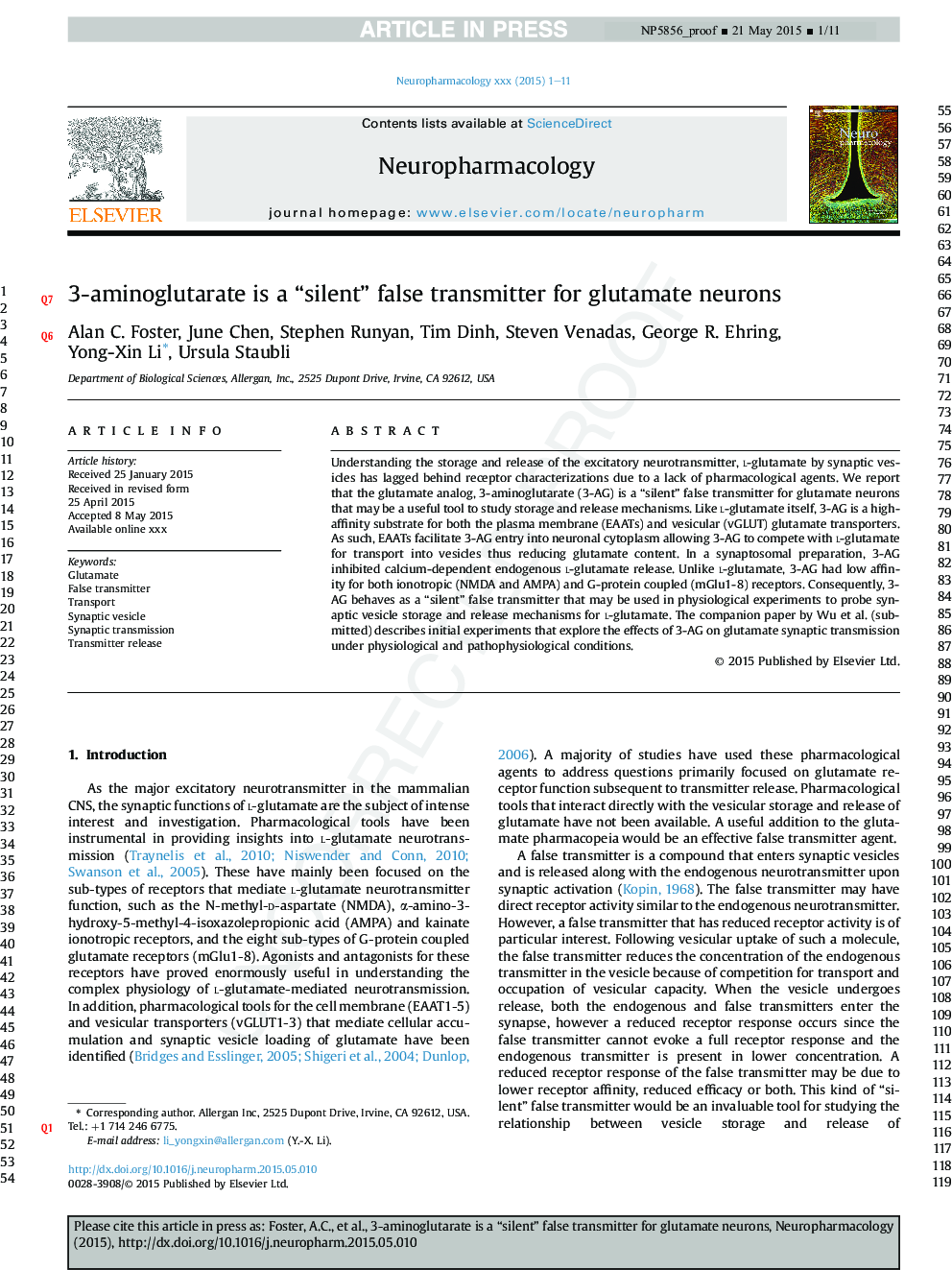| Article ID | Journal | Published Year | Pages | File Type |
|---|---|---|---|---|
| 5813998 | Neuropharmacology | 2015 | 11 Pages |
Abstract
Understanding the storage and release of the excitatory neurotransmitter, l-glutamate by synaptic vesicles has lagged behind receptor characterizations due to a lack of pharmacological agents. We report that the glutamate analog, 3-aminoglutarate (3-AG) is a “silent” false transmitter for glutamate neurons that may be a useful tool to study storage and release mechanisms. Like l-glutamate itself, 3-AG is a high-affinity substrate for both the plasma membrane (EAATs) and vesicular (vGLUT) glutamate transporters. As such, EAATs facilitate 3-AG entry into neuronal cytoplasm allowing 3-AG to compete with l-glutamate for transport into vesicles thus reducing glutamate content. In a synaptosomal preparation, 3-AG inhibited calcium-dependent endogenous l-glutamate release. Unlike l-glutamate, 3-AG had low affinity for both ionotropic (NMDA and AMPA) and G-protein coupled (mGlu1-8) receptors. Consequently, 3-AG behaves as a “silent” false transmitter that may be used in physiological experiments to probe synaptic vesicle storage and release mechanisms for l-glutamate. The companion paper by Wu et al. (2015) describes initial experiments that explore the effects of 3-AG on glutamate synaptic transmission under physiological and pathophysiological conditions.
Keywords
Related Topics
Life Sciences
Neuroscience
Behavioral Neuroscience
Authors
Alan C. Foster, June Chen, Stephen Runyan, Tim Dinh, Steven Venadas, George R. Ehring, Yong-Xin Li, Ursula Staubli,
